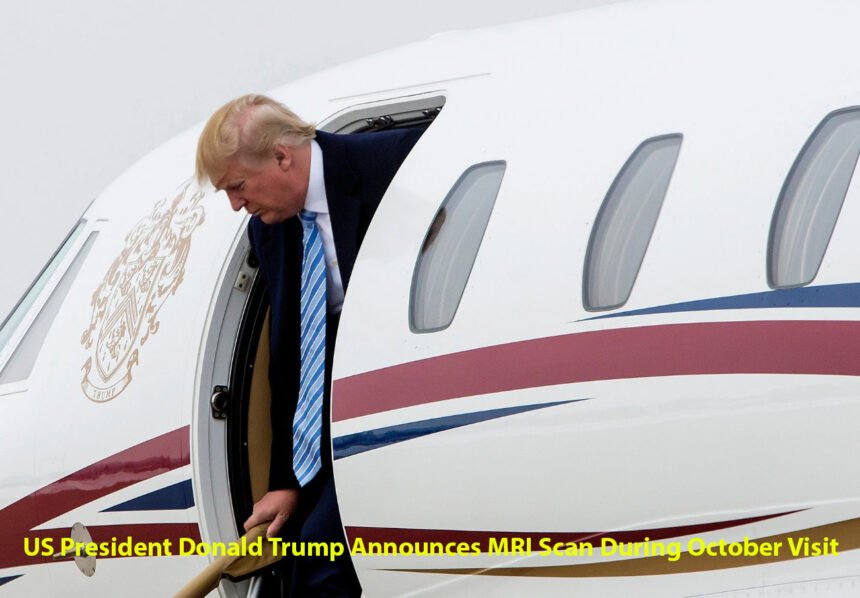President Donald Trump revealed on Monday that he underwent a magnetic resonance imaging (MRI) scan earlier this month during a visit to the Walter Reed National Military Medical Center, though he did not specify which part of his body was examined. According to the president, the results were described as “perfect.”
The news was disclosed in remarks made aboard Air Force One en route to Tokyo. While the announcement did not include an explanation of why the MRI was performed, it was noted that the scan was conducted during a previously reported check-up at Walter Reed. The White House physician later confirmed that the president, aged 79, is in “exceptional health,” and added that the medical reports were among the best seen for someone of his age.
Context of the Visit and Health Summary
The president’s visit to Walter Reed earlier in October was reported to include lab tests, preventive assessments, and advanced imaging part of what the physician described as a routine follow-up evaluation under a broader health-maintenance plan. Officials have emphasized that despite his advanced age, the president maintains strong physical, neurological, and cardiovascular performance.
In July, the White House disclosed that the president had been diagnosed with chronic venous insufficiency a common circulatory condition that can cause leg swelling though at that time tests showed no sign of more serious complications such as deep vein thrombosis or arterial disease. Additional testing, including an echocardiogram and laboratory work, found normal results and healthy cardiac function.
What Was Known and What Was Not
When asked by reporters, President Trump limited his comment to: “It was perfect.” He declined to state which part of his body was scanned or what prompted the MRI. Because MRIs are used to evaluate a wide range of conditions, the announcement in itself does not normally indicate the presence of a serious issue.
Despite the limited disclosure, the White House release conveyed that the exam yielded outstanding results and that the age-related benchmarks for the president’s health were being exceeded. The phrase “exceptional health” was used to describe the findings.
Political and Public Implications
Given the president’s age and the frequent public interest in his fitness for office, the announcement is likely to draw attention both politically and medically. Presidential health has long been a matter of public concern, and any major imaging, such as an MRI, tends to spark questions about underlying conditions, even when no problem is confirmed. Administrations in the past have sought to strike a balance between transparency and privacy when the health of a sitting president is involved.
In this case, the administration appears to have chosen to highlight the positive outcome of the examination while withholding further detail. This approach may help to reassure supporters and mitigate speculation, even as it leaves unanswered the question of why the scan was conducted in the first place.
Medical Perspective on MRIs
An MRI scan employs strong magnets and radio waves to produce detailed images of structures inside the body. Because of its versatility, an MRI can be used to evaluate neurological conditions, musculoskeletal injuries, organ anomalies, vascular problems, or tumors. The fact that an MRI was performed does not necessarily imply a serious condition; it may also be part of preventive screening or monitoring of a known benign issue.
In the context of the president’s disclosed leg-vein condition and the earlier assessments of cardiovascular health, the MRI may have been ordered as part of a broader diagnostic work-up or routine elder-care screening. Whether this was the case is not publicly specified.
Why This Matters
For a president aged 79, health updates are closely watched by the public, media, and political observers. The revelation of an MRI coupled with the strong language used to describe the results may be intended to project an image of vitality and capability. The lack of further detail, however, leaves space for continued scrutiny and speculation.
While the “perfect” label on the MRI outcome and the “exceptional health” designation may serve to reassure, they may also prompt stakeholders to wonder what exactly was being evaluated. Transparency advocates often argue that more information should be provided when health scans are involved, especially for high-ranking public officials.












